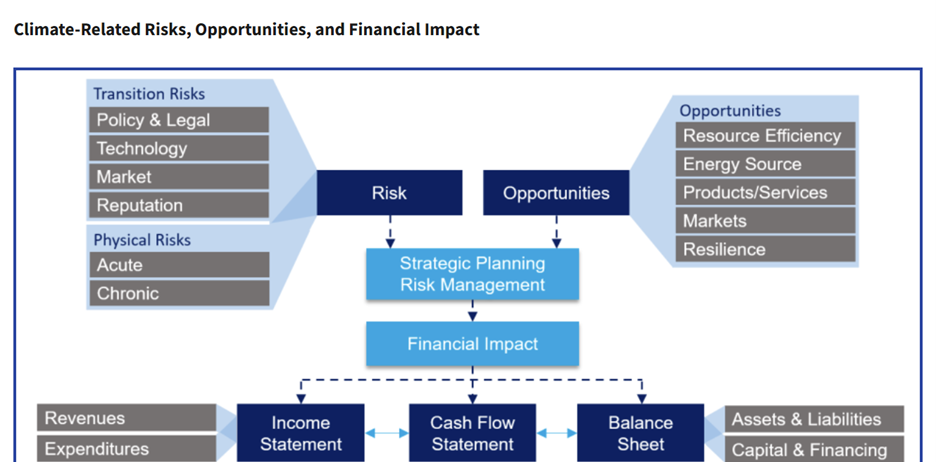Even as the Trump administration rolls back the environmental protections that the Biden administration had implemented, it is important for companies to recognize and acknowledge the impact that the changes in climate have for their company and supply chains. Companies need to recognize that the impacts of climate change in 2025 are a continuation and intensification of trends that have been observed over previous years. This includes increased extreme weather events such as more frequent and intense heat waves, heavy rainfall, floods, droughts, and wildfires. One of the most recent examples is Hurricane Helena and the impact on Asheville, North Carolina. These events are causing significant damage to infrastructure, agriculture, and human lives. According to the World Meteorological Organization (WMO), 2024 is the warmest year on record based on six international datasets. The past 10 years have all been in the top 10, in an extraordinary streak of record-breaking temperatures. This contributes to the intensification of other climate change impacts.
In addition, there have been changes in sea levels and ice cover. Sea levels are rising due to thermal expansion of water and melting glaciers, threatening coastal communities. As the Arctic sea ice continues to diminish, there are significant implications for regional and global climate patterns. Climate change is affecting ecosystems worldwide, leading to shifts in species distributions, increased extinction risks, and damage to coral reefs.

Importance of Climate Change Risk Assessments
With the continued impact of climate change on communities and companies, climate change risk assessments are becoming more imperative. A climate change risk assessment (CCRA) is a structured process that evaluates how climate-related risks which include physical risks such as extreme weather and rising sea levels, and transition risks such as policy shifts, market changes, technological advancements, and climate-related opportunities could impact a company over the short, medium, and long term.
A climate risk assessment helps companies understand and manage the potential impacts of climate change on their operations and financial stability. It helps companies identify vulnerabilities to both physical risks, such as extreme weather events that can disrupt supply chains and damage assets, and transitional risks, like evolving regulations and shifting market demands. By understanding these risks, companies can make informed strategic decisions, build resilience, and identify opportunities within the transition to a low-carbon economy. In addition, climate risk assessments are becoming increasingly important to meet the expectations of stakeholders, including investors, customers, and regulators, who are demanding greater transparency and action on climate-related issues.
What Is a Climate Risk Assessment?
A climate risk assessment is a systematic process designed to identify, analyze, and evaluate potential risks stemming from climate-related hazards. It helps a company understand how changes in the climate, such as rising temperatures, altered precipitation patterns, and increased frequency of extreme weather events, can impact a company’s infrastructure and business practice. The assessment allows a company to shift from a reactive to a proactive approach to climate change. A thorough risk assessment ensures that a company is not left vulnerable to unexpected and potentially catastrophic events. This enables a company to implement strategies to mitigate the impact of climate change, build resilience, and ensure long-term sustainability.
Key Components of a Climate Risk Assessment
A comprehensive climate risk assessment involves several key components, aimed at understanding and managing the potential impacts of climate change.
- Identify climate-related hazards: Companies need to analyze historical climate data and future climate projections, and then identify people, infrastructure, assets, or ecosystems that could be affected by the identified climate hazards including mapping the location and characteristics of these exposed elements.
- Conduct a vulnerability assessment: This assesses the degree to which the exposed elements are susceptible to damage or disruption from climate hazards. Factors such as infrastructure resilience, social vulnerability, and ecological sensitivity need to be considered.
- Risk analysis: Companies need to combine information from the hazard, exposure, and vulnerability assessments to quantify the level of risk.
- Scenario analysis: Companies should develop and analyze different climate scenarios to understand the range of potential future climate impacts.
- Monitor and evaluate: This involves establishing a system to monitor the effectiveness of adaptation measures and to track changes in climate risks over time allowing for adjustments to strategies as needed.
Companies need to consider both the risks related to the physical impacts of climate change such as extreme weather events, and the transitional risks that are related to the transition to a low-carbon economy like policy changes, and technological advancements. It is important to recognize that climate change can also create opportunities, for example, new markets for sustainable technologies.
Conclusion
Regardless of the fluctuating US and EU regulatory environments, companies are beginning to be actively focused on the impact of climate change on their business models and supply chains. Climate risk assessments are proving to be indispensable tools for navigating the multifaceted challenges posed by a warming planet. These assessments, encompassing thorough hazard identification, detailed vulnerability analysis, precise risk quantification, dynamic scenario planning, and continuous monitoring, are helping companies to effectively manage both physical and transitional risks. By using a proactive approach, they not only strengthen a company against climate-related disruptions, but also potentially unlock opportunities within the evolving low-carbon economy. If your company is interested in an initial consultation to evaluate the value of a climate risk assessment for your business, please contact Canopy Edge to speak with our experts.


